Interested in oculoplastics? Get the scoop on this competitive specialty from someone (Sarah Jacobs M.D.) who just recently went through the fellowship match process.
1. What is the overall structure and timeline of the fellowship application process?
Unlike other subspecialties within ophthalmology, applicants for oculoplastics must submit their fellowship application by early Fall of their 2nd year (PGY3) of ophthalmology residency. The application itself is centralized through SF Match (https://www.sfmatch.org), but each fellowship program has independent deadlines and some have additional supplemental materials that the applicant must submit directly to the program. For example, University of Wisconsin requests a hand-written letter describing yourself and your interest in the subspecialty. Interviews are granted throughout the winter (typically January through March). The rank list is due in early April, with final match results announced a week after rank list submission. In the broad sense, there are three types of Oculoplastics fellowships. The first is a 2 year fellowship approved and sanctioned by the American Society for Ophthalmic Plastics and Reconstructive Surgery (ASOPRS), open to physicians completing residency in the US. The program requirements, preceptors, and facilities are all reviewed and approved by ASOPRS, and the program graduates are eligible for ASOPRS endorsement. The second type is a 1-2 year non-ASOPRS fellowship, in which the requirements and content may be more variable. The third type is a 1-year ASOPRS fellowship available to physicians who complete their residency training outside the US. For more information about ASOPRS fellowships, visit their website.2. What’s the scoop on “Even Year” and “Odd Year” fellowships?
Each ASOPRS fellowship is a 2 year program. The designation of “Even” or “Odd” refers to the starting year (e.g. A resident who submits an application October 2014, interviews January through March 2015, and matches to a program that will start July 2016 is an “Even Year” applicant.) Most ASOPRS fellowship sites only have one fellow at a time, with the fellow completing the entire 2 years of training before the next fellow comes on board. Some programs have an Even year fellow and an Odd year fellow, each with their own official designated ASOPRS mentor (e.g. Mass Eye & Ear, UCLA, or the New York combined program). Others have one ASOPRS fellow and one foreign fellow (e.g. University of Iowa), and some have one ASOPRS fellow and one non-ASOPRS fellow (e.g. Medical College of Wisconsin).3. How competitive is the Oculoplastics fellowship application process?
Brace yourself. Depending on the cycle, there are typically between 20-25 ASOPRS fellowship slots available. In reality, that number shrinks because some of them will de facto fill internally and some of them will opt not to accept a fellow for that cycle. Each year, there are approximately 60-100 applicants. As an applicant pool comprised of brilliant, overachieving perfectionists who are self-confident enough to take the risk of applying to ophthalmology’s most competitive subspecialty, they are a formidable group of human beings indeed. Reconcile yourself in advance to the idea that they are all better looking and better dressed than you, with higher OKAP scores, less adult acne, and more natural grace. Then remind yourself that you are also a member of this amazing group. They are very likely as awed by you as you are by them. Get your strongest faculty members to write you the strongest possible letters. If your residency program does not have an oculoplastics presence, see if you can negotiate an elective away-rotation to a site that does in order to work with someone whose name is recognizable within the field. Get a crisp suit, new shoes, and a good haircut. Whiten your teeth, trim your nails, and move forward.4. What should I look at when evaluating a fellowship?
A. Number of faculty: Ideally, a fellowship will strike a balance between having enough preceptors to teach you a variety of philosophies, management styles, and surgical techniques, but not so many preceptors that the fellow is stretched thin or pulled in too many directions. Most of the faculty and fellows I talked to on the interview trail suggested that somewhere between 2 and 6 tends to strike that balance well, but there is really no magic number. Read up on the program in advance, and talk to the fellow and residents during your interview visit to get the best sense of whether the faculty size is effective.B. Prestige of faculty: Oculoplastics is a small community, and physicians are already prominent within that community by the time they become ASOPRS fellowship coordinators. You will find that the idea of “lineage” is prominent along the interview trail (e.g. Dortzbach trained Kikkawa, who trained Korn. Tenzel trained Custer, who trained Couch, etc), but rather than honing in on prestige, it is better to look for good mentors you will get along with and from whom you can learn optimally. There are some mentors with a tremendous reputation, but their fellows experience more of an observership with them rather than a hands-on operative experience.
C. Research potential: Every ASOPRS fellow is required to complete a thesis research project during the 2 year fellowship. On the interview trail, ask about the factors at the institution which will facilitate vs hinder your potential research efforts. Do the fellowship mentors already have projects underway? Is there built-in protected time for you to work on projects? How navigable is the IRB?
D. Balance of mentorship and independence: It is vital to have meaningful time with the mentors during their clinics and in the OR with their patients, in order to learn their strategies and systems for pre-operative assessment and planning, intraoperative management of routine and complicated cases, and post-operative follow-up. They should get the fellow actively involved working alongside them. It is equally vital to have your own independent clinics and OR time. This is usually accomplished through involvement with a VA medical center or resident clinic. Beware of programs that give you too much independence. How can you learn from the mentor if you are always working alone? Beware of programs that keep the fellow on too short a leash. How can you apply your growing knowledge and skill set if you never have an opportunity to make your own assessments, plans, mistakes, and successes? Beware of programs that depend too heavily on the fellow to move patient volume. When do they create opportunities for the fellow to be a learner rather than purely a workhorse? Beware of programs that veer too far toward either the surgical or the clinical end of the spectrum. You will need a healthy balance of both. How does an OR-heavy fellow learn to select & plan surgeries and manage post-op sequellae? How does a clinic-heavy fellow learn kinetic surgical skills and real-time operative decision making?
E. Surgery numbers: All of the ASOPRS fellowships meet certain minimum case numbers for all of the key procedures. That said, you will find certain programs will be more trauma-heavy (ask whether Oculoplastics shares facial trauma call), or cosmetically-oriented (ask about the aesthetic vs functional side of the practice, and how actively involved the fellow is with each side). Programs will also vary in their involvement with large interdisciplinary cases, such as combined neurosurgery/oculoplastics sphenoid wing meningioma resections with post-excision reconstruction, or combined pediatrics/ENT/facial plastics/oculoplastics craniofacial reconstruction cases. As an applicant, think about what you value, and seek out a program that leans more toward the cases that make you feel alive.
Want to get more from OphthoQuestions?

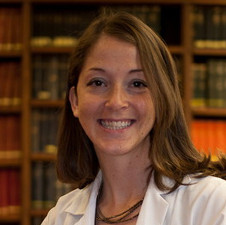

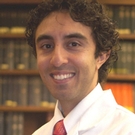
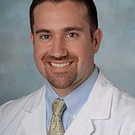
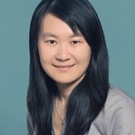


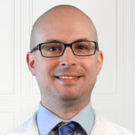


Please login to comment.